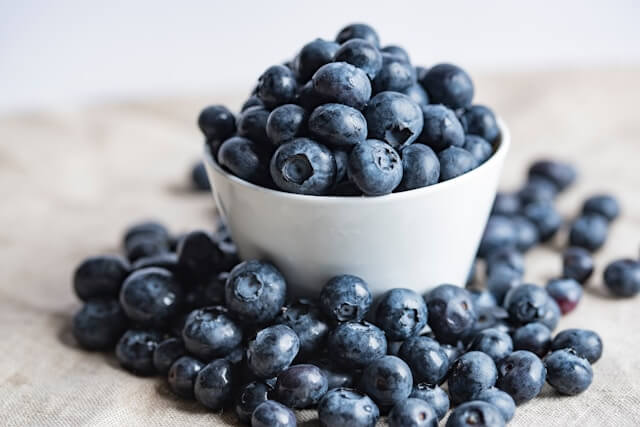Blueberries have long been a favorite fruit for their sweet flavor, vibrant color, and health benefits. But recently, they’ve become harder to find in stores, and prices have noticeably risen. This phenomenon is no coincidence it’s the result of a global blueberry shortage. In this blog post, we’ll explore the causes behind the shortage, its impact on consumers and the industry, and what the future holds for this beloved berry.
Is There a Blueberry Shortage?
Yes, there is a blueberry shortage affecting markets worldwide. Consumers have started noticing fewer blueberries on grocery store shelves and higher price tags attached to the ones that are available. The shortage isn’t confined to a single region; it’s a global issue caused by a mix of environmental, economic, and logistical factors.
While blueberries are typically grown in regions with temperate climates, these areas are facing growing challenges. The yield from blueberry crops has been steadily declining due to unpredictable weather conditions, pest infestations, and other disruptions. It’s more than just a temporary inconvenience this shortage is reshaping how consumers access blueberries and how farmers grow them.
For many people, blueberries are a staple in their diets. From smoothies to baked goods, they’re a versatile fruit that adds flavor and nutrition to countless dishes. But as availability decreases, the shortage is being felt not just by consumers but also by businesses that rely on blueberries for their products.
Why is There a Blueberry Shortage?
The shortage is driven by a combination of factors that have converged over recent years. Let’s break down the primary causes:
Climate and Weather Challenges
Unpredictable weather patterns are one of the biggest reasons behind the blueberry shortage. Blueberries require specific conditions to thrive, but climate change is disrupting those conditions. Unseasonal frosts, extended droughts, and excessive rainfall are impacting blueberry farms worldwide. Regions that were once ideal for growing blueberries are now struggling to meet demand due to erratic weather.
Events like El Niño have further intensified these issues, leading to abnormal climate cycles that hinder the growth of crops. Without consistent weather, blueberry plants struggle to flower and produce fruit on time, reducing both the quantity and quality of harvests.
Pests and Diseases
As temperatures rise globally, the prevalence of pests like the spotted wing drosophila has increased. These insects target ripening blueberries, causing significant damage to crops. Farmers have been battling these pests for years, but their growing numbers have made it harder to protect harvests.
Additionally, diseases affecting blueberry plants are spreading more rapidly. Fungal infections and root diseases are cutting yields and forcing growers to invest heavily in treatments, which further drives up costs.
Labor and Economic Pressures
Labor shortages have become a recurring issue in agriculture, and the blueberry industry is no exception. Many farms are struggling to find workers, especially during peak harvesting seasons. Economic inflation has only made things worse, driving up wages and operational costs.
Farmers also face financial challenges when trying to invest in technologies that could mitigate crop losses. For small-scale growers, these investments are often out of reach, leaving them unable to compete with larger, more resourceful farms.
Supply Chain Disruptions
Even when blueberries are successfully harvested, getting them to consumers has become increasingly difficult. Global supply chains are under strain due to transportation delays, trade restrictions, and inefficiencies in distribution networks. These disruptions make it harder to allocate the limited supply of blueberries effectively, leaving some regions with shortages while others experience surplus waste.
How the Blueberry Shortage is Affecting Consumers
For consumers, the blueberry shortage is causing noticeable changes. The first and most obvious impact is reduced availability. Grocery stores are stocking fewer blueberries, and they often sell out quickly. This scarcity has left many people searching for alternatives or adjusting their shopping habits entirely.
Another major effect is the rising cost of blueberries. With supply dwindling and production costs increasing, retailers have had no choice but to raise prices. Blueberries, once relatively affordable, are now considered a luxury item for many households. This has made it harder for budget-conscious consumers to enjoy their favorite fruit.
Beyond individual consumers, businesses are also feeling the pinch. Restaurants, bakeries, and food manufacturers that rely on blueberries for their recipes are facing higher costs and fewer supplies. Some have had to change their menus or reformulate their products due to the shortage.

Impact on the Blueberry Industry
The blueberry shortage is reshaping the entire industry. Farmers are under immense pressure to adapt to changing conditions, but many are struggling to stay afloat. Smaller farms, in particular, are finding it hard to cope with the rising costs of pest control, labor, and transportation.
At the same time, larger farms and corporations are investing in new technologies to improve resilience. Innovations like climate-controlled growing environments and pest-resistant plant varieties are being explored as potential solutions. However, these advancements take time and significant financial resources to implement.
The shortage has also redefined trade dynamics. Countries that export blueberries are seeing increased demand, but they’re unable to meet it due to production challenges. As a result, international markets are becoming more competitive, with buyers willing to pay premium prices for limited supplies.
How Long Will the Shortage Last?
Predicting the duration of the blueberry shortage is difficult. While some experts believe improvements could be seen within a few years, others warn that the underlying issues like climate change and labor shortages are long-term challenges.
The timeline for recovery depends heavily on how quickly the industry can adapt. Investments in sustainable farming practices, pest control solutions, and resilient supply chains will be crucial. Until then, consumers may need to adjust to periodic shortages and fluctuating prices.
What Consumers Can Do
Though the shortage is beyond individual control, there are ways consumers can navigate it. Exploring alternative fruits like blackberries, raspberries, or frozen blueberries can help reduce reliance on fresh supplies. Frozen blueberries, in particular, are often more affordable and widely available.
Supporting local farmers can also make a difference. Purchasing blueberries directly from nearby farms not only helps the community but also reduces the strain on global supply chains.
Lastly, staying informed about the issue can empower consumers to make better choices. Keeping an eye on industry updates and seasonal trends can help predict when blueberries are more likely to be available.
Conclusion
The blueberry shortage is a complex issue driven by environmental, economic, and logistical challenges. Its impact is being felt by farmers, businesses, and consumers alike. While solutions are being explored, the road to recovery won’t be quick or easy.
In the meantime, consumers can adapt by exploring alternatives, supporting local farms, and staying informed about the issue. Let’s hope that with innovation and collaboration, blueberries will soon return to grocery shelves in abundance. Until then, every berry counts!
Also Read:
